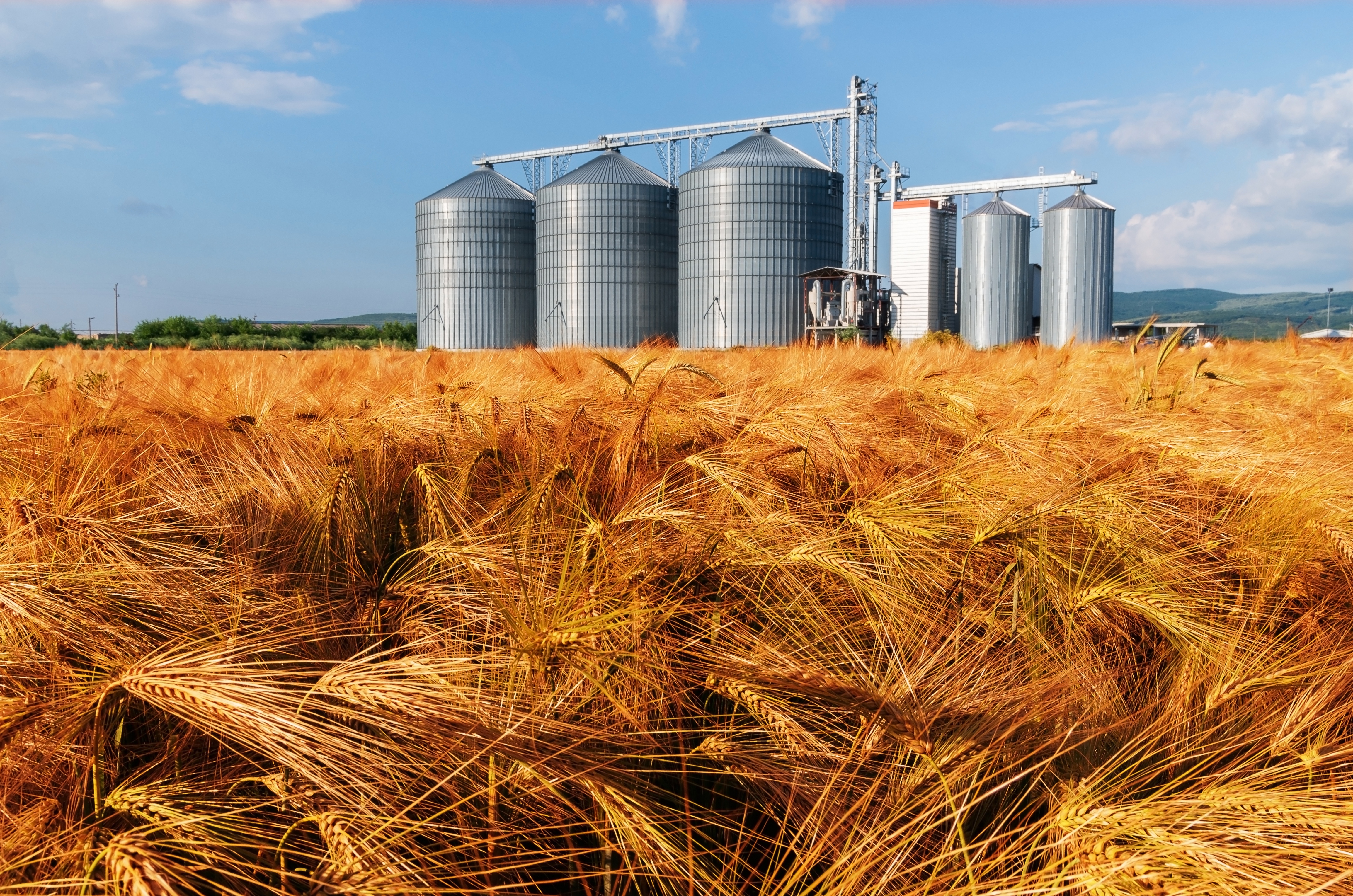
Feed Management
Diet has a large impact on milk production in dairy cows. It also affects manure production and GHG emissions.
Dairy cow feed is made up of many different components and formulated to provide optimal nutrition to keep cows healthy while maximizing milk production. Ration programs have been developed so that dietary requirements of nitrogen and phosphorous are met while minimizing excess levels of these nutrients that get excreted in manure.
What is silage?
Silage is a fermented animal feed that is a typical component of dairy rations. It is made up of grass, corn, or other grain crops that are harvested when green and the plant moisture is high. The entire plant is harvested, not just the grain.
Silage is made by placing the fresh chopped plant material into a silo, bunker, or tightly wrapped bale or bag. The key to making silage is ensiling at the proper moisture content and particle size to achieve a tight pack to exclude oxygen. The ensiling process is an anaerobic microbial fermentation of water-soluble sugars to lactic acid, lowering the pH to a point that inhibits further microbial fermentation.
How is silage stored?
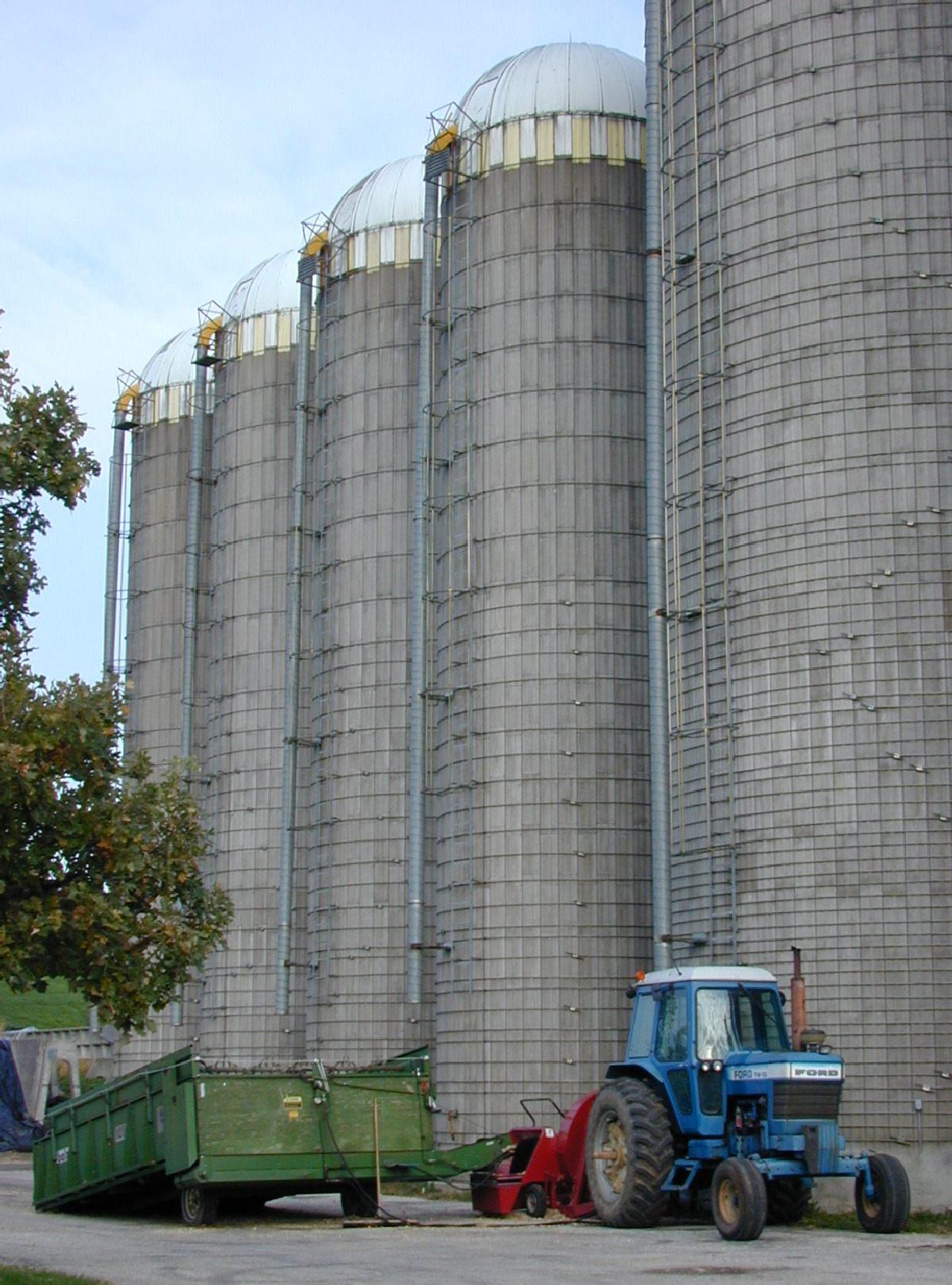
Upright silos, bunkers, ag-bags, and wrapped bales are common storage options for silage.
In upright silos, gravity packs the stored crops as more material is added from the top and the depth increases.
A bunker silo is a large flat area that usually has walls along two sides. The floor should be concrete, asphalt, or some other impervious material to keep the silage clean and prevent liquid from leaching from the pile into the ground below.
The chopped plant materials are spread in even layers on the floor. As the pile gets taller, heavy tractors or payloaders are driven across the top to tightly pack the material.
When the bunker is full, a large sheet of plastic is used to cover the exposed top surface.
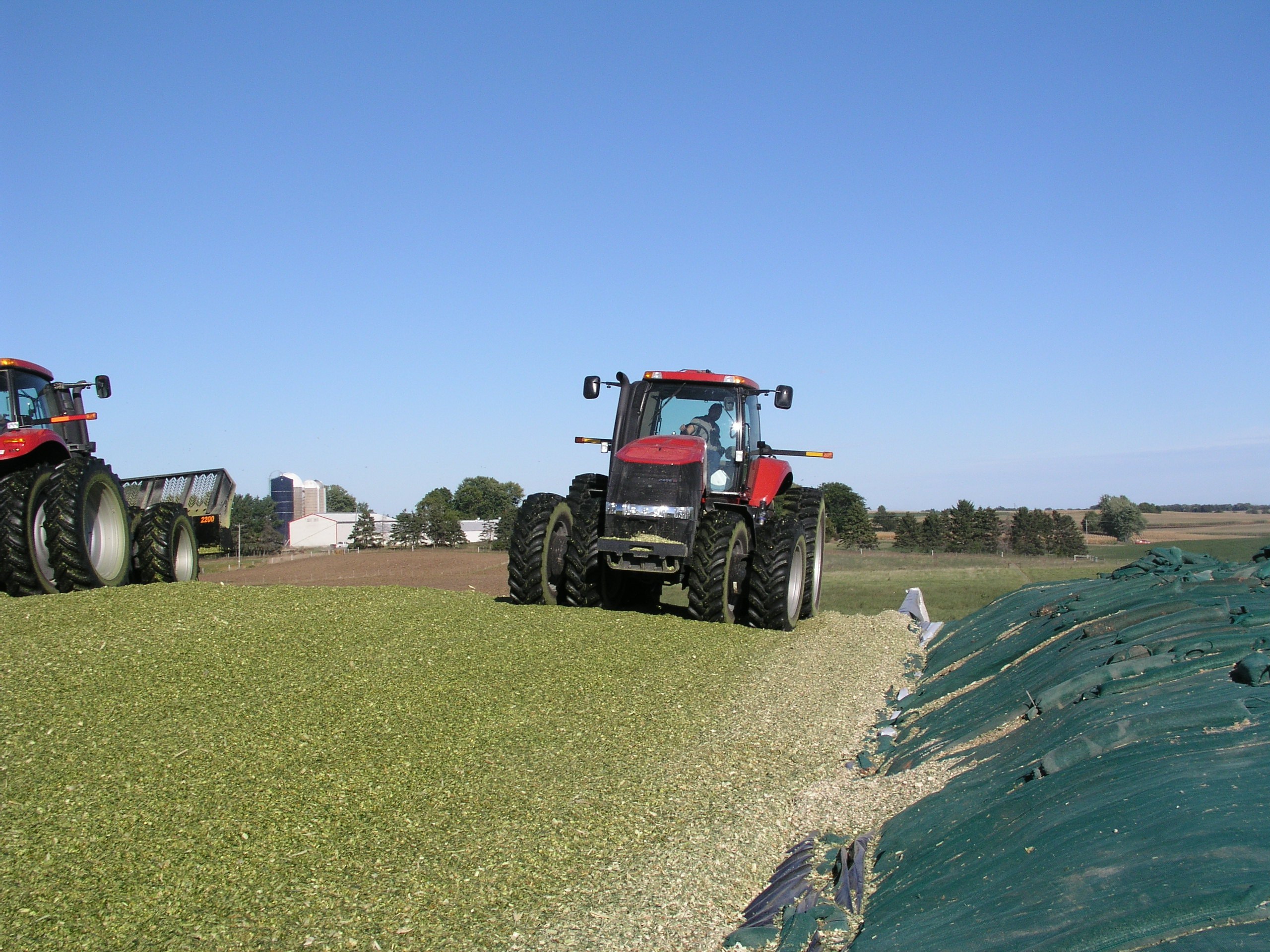
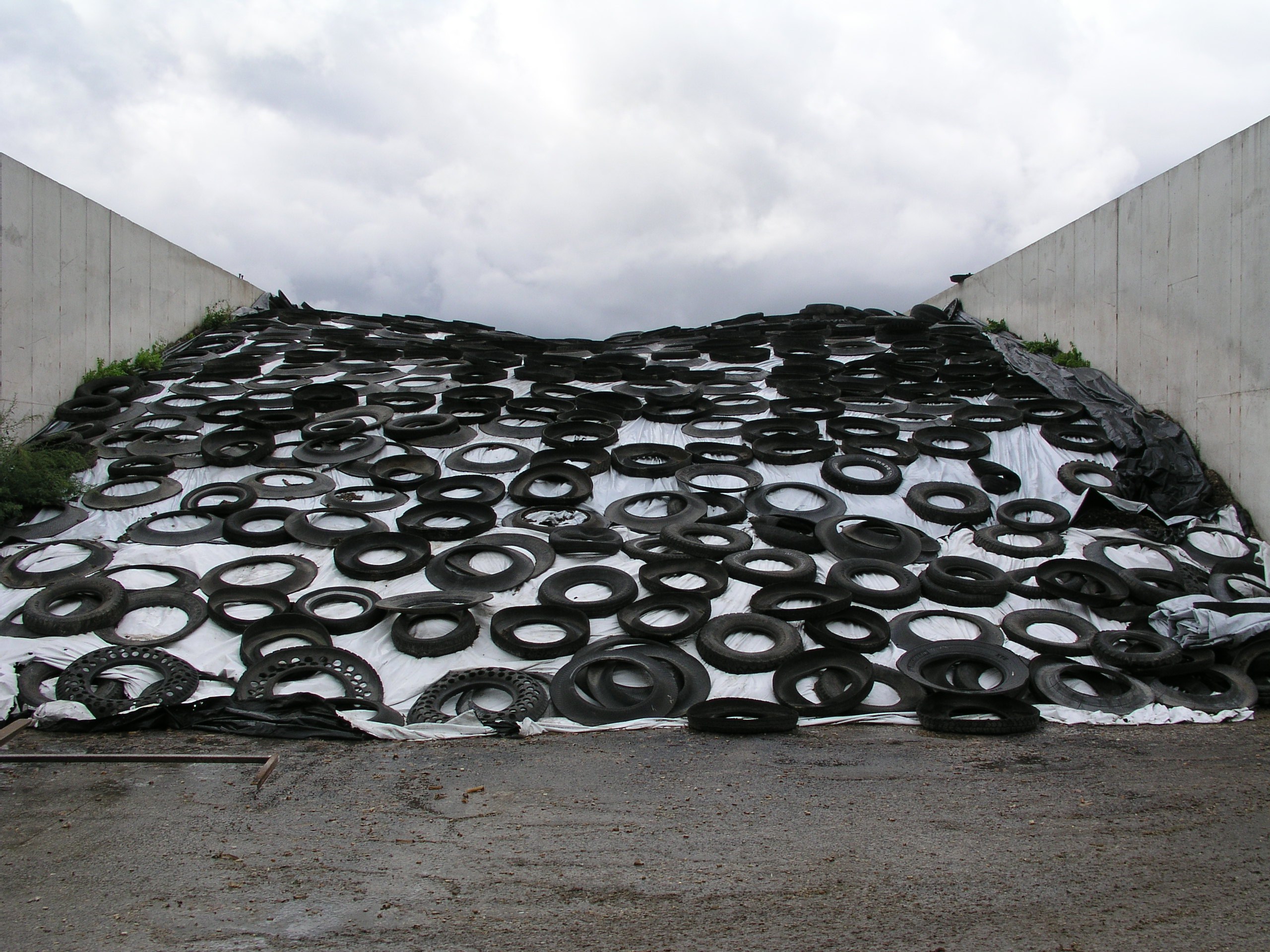
The plastic is typically weighted down using recycled car tires that are split in half and sometimes perforated to prevent stagnant rainwater from collecting in them (for mosquito control). Under optimal conditions, fermentation begins after two days, and after 2 to 4 weeks the silage is ready to be used for animal feed.
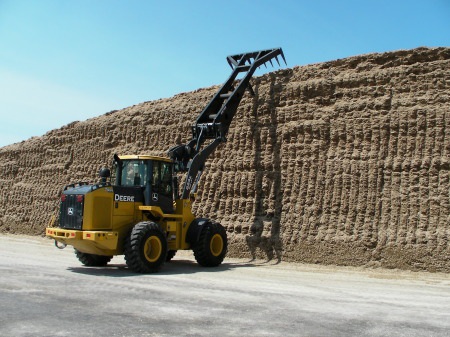
After the fermentation process is completed, the feed is removed from the bunker for use by cutting into the face of the feed pile using a bucket or a special silage facer that shaves material away from the vertical face of the feed bunker.
The video below demonstrates occupational safety when working around pile and bunker silos.
Preventing silage-related injuries and fatalities among farm workers
This video describes and shows how dangerous can be working around pile and bunker silos.
Click here for a Spanish language version of the video.
Other Types of Bulk Feed Storage

Commodity sheds and upright bins are also common on dairy farms. Commodity sheds are typically open-front buildings that are oriented to protect the stored feed materials from weather. The bays have concrete floors and walls to keep individual feed components clean and dry.
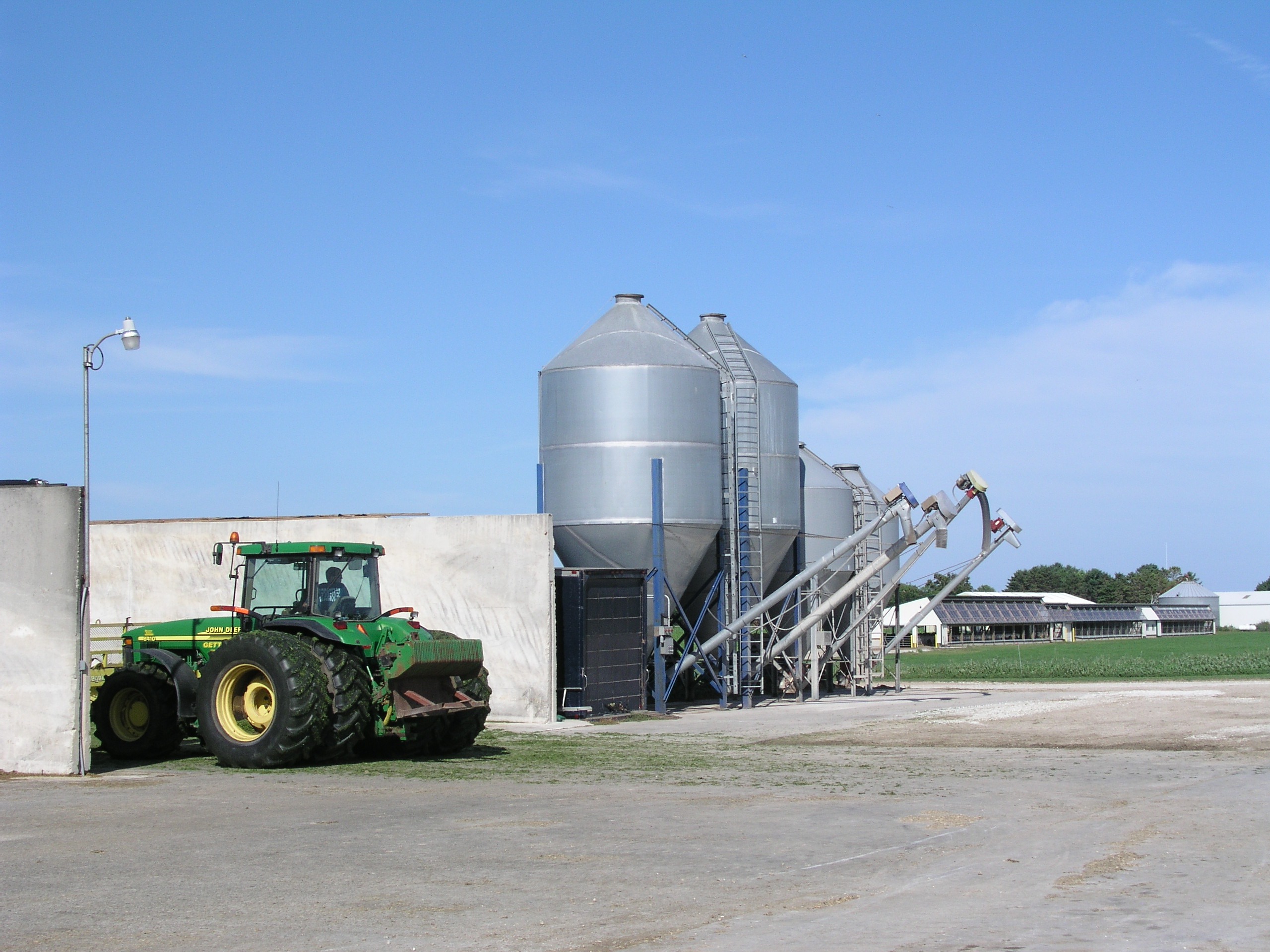
Upright bins are also used to store feed materials on dairy farms. Advantages of upright bins are that they protect stored materials from shrinkage and pests, have a small footprint, and are self-unloading. They also make it easier to obtain accurate weights for feeding, which reduces waste. However, they are not compatible with all types of feed materials and require an auger or blower for filling.
Some dairy farms include a combination of commodity sheds and upright bins to accommodate a wide range of feed materials.
Storage of Small Ingredients
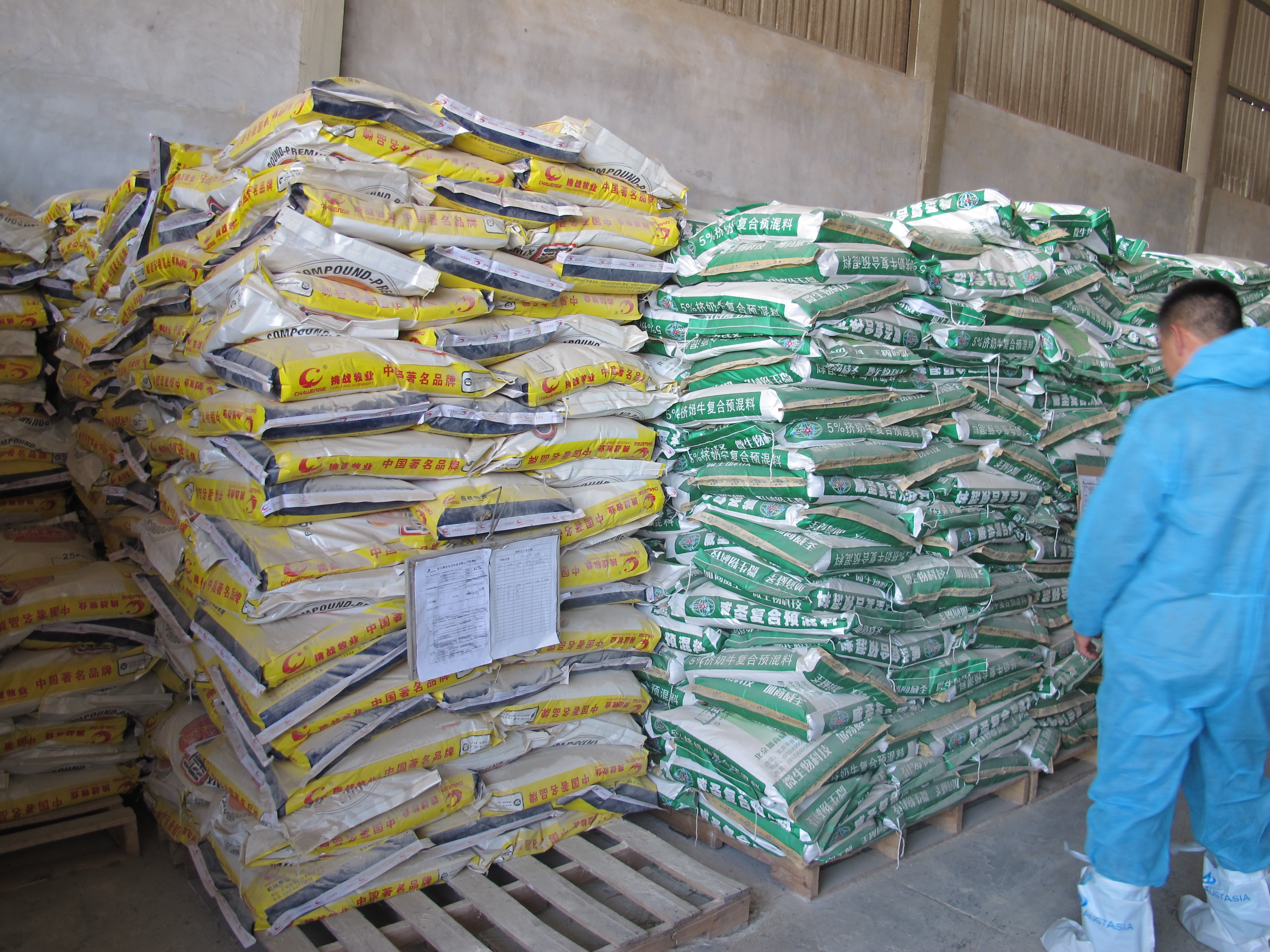
Some feed ingredients and additives are purchased in bags, and stored in a dry location off the floor. These ingredients may be added to enrich the feed mixture for the purpose of increasing yield, protein, or fat content of milk, increase dry matter intake, stabilize or improve rumen function, increase digestibility, or to improve animal growth and overall health. This is similar to vitamin supplements that people might take.
Common Sources of Feed Loss
Birds and rodents, the environment, spoilage, moisture loss, spillage, and over feeding are all common sources of feed loss on dairy farms.
How Dairy Cows Eat
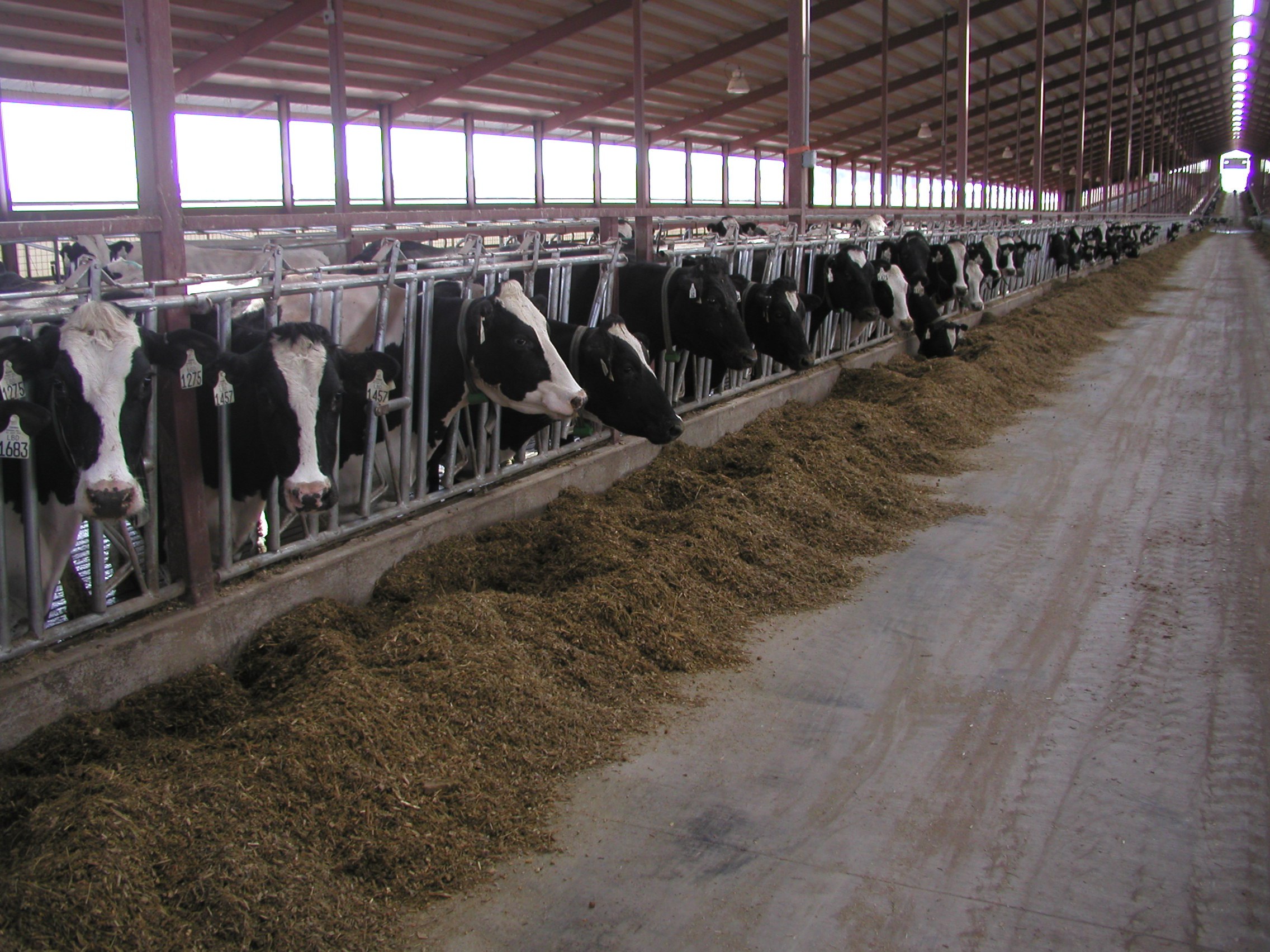
Feed components are usually mixed in large hoppers to create a uniform ration. The feed is delivered to the barn where it is placed in rows on the opposite side of a tall curb between the cow alley and the drive-through feed alley. Cows have free access to the feed whenever they want it.
Dairy cows are ruminant animals. Their stomach is divided into four sections, each one performing a different task when digesting feed.